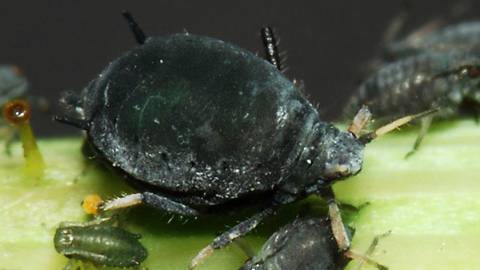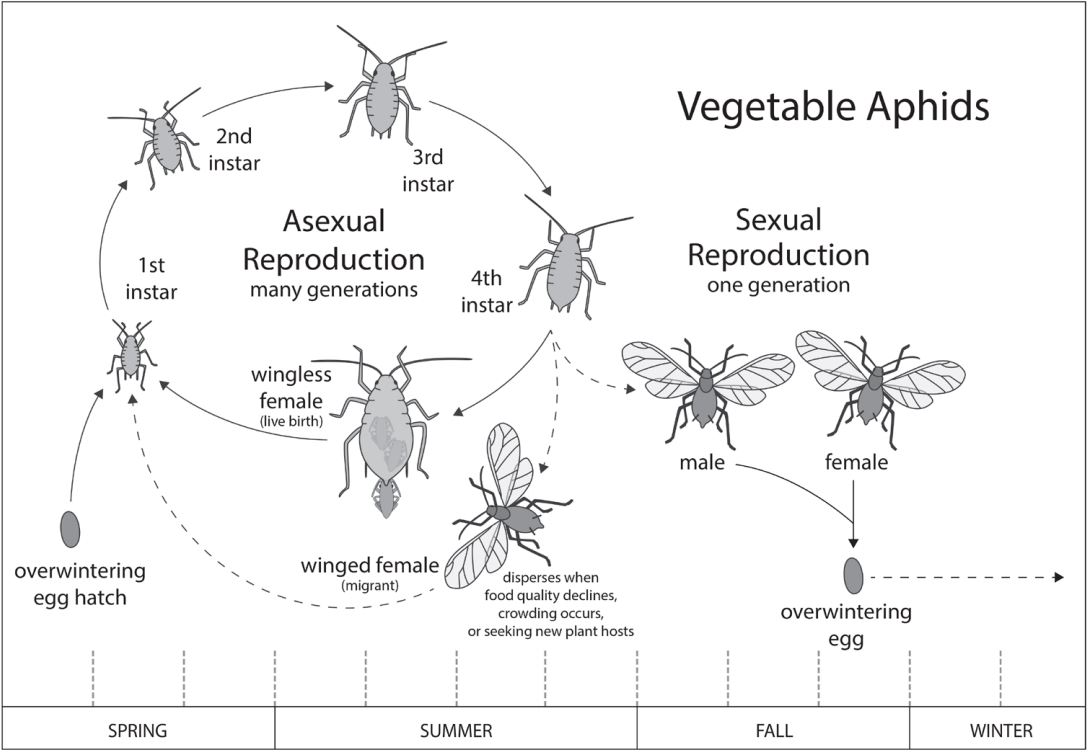Cannabis Aphids
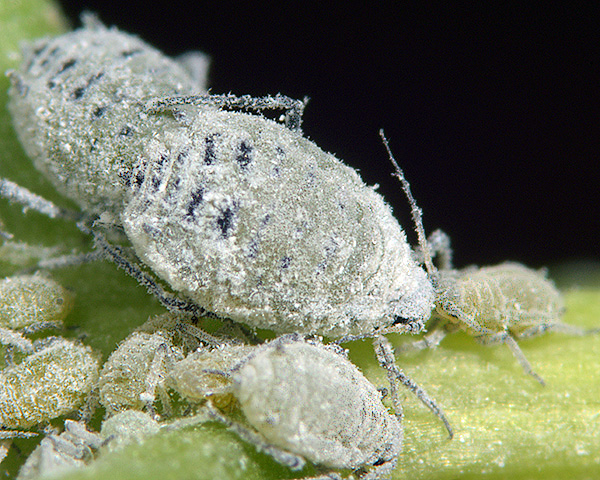
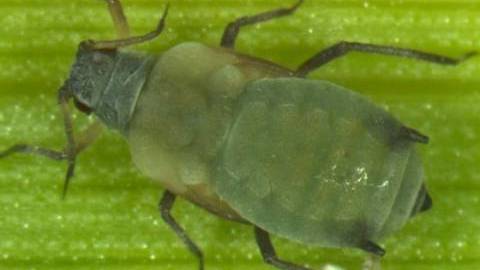
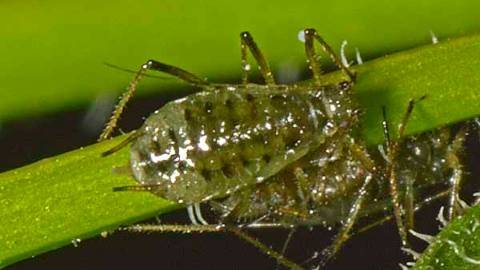



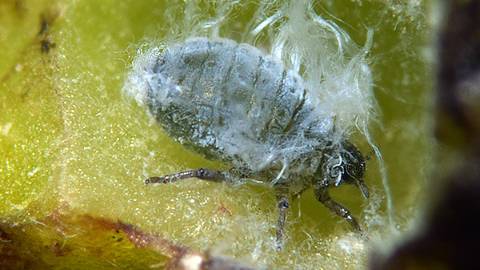
HOSTS
- Hemp
BACKGROUND
Aphids are small, soft-bodied insects that suck sap from plant tissues. Aphid feeding distorts and stunts plants, produces honeydew that supports sooty mold fungi, and can vector plant viruses. During spring and summer, aphids can be abundant.
Common aphids that affect vegetables found in Utah, include the following:
- Black Bean Aphid (Aphis fabae)
- Cabbage Aphid (Brevicoryne brassicae)
- Corn Leaf Aphid (Rhopalosiphum maidis)
- Honeysuckle Aphid (Hyadaphis foeniculi)
- Currant-Lettuce Aphid (Nasonovia ribisnigri)
- Lettuce Root Aphid (Pemphigus bursarius)
- Green Peach Aphid (Myzus persicae)
- Melon-Cotton Aphid (Aphis gossypii)
- Pea Aphid (Acyrthosiphon pisum)
- Plum-Thistle Aphid (Brachycaudus cardui)
- Potato Aphid (Macrosiphum euphorbiae)
- Turnip Aphid (Lipaphis erysimi)
- Willow-Carrot Aphid (Cavariella aegopodii)
DESCRIPTION
Aphids are small, soft-bodied, pear-shaped insects with two tailpipe-like appendages called “cornicles.” Cornicles are unique to aphids, and excrete defensive compounds (waxes and alarm pheromones). Aphids vary in color, including within species, depending on maturity, food source, genetic lineage, and their environment. Juvenile aphids (nymphs) look like adults, except smaller in size. As nymphs feed and grow they molt, casting off white skins (exoskeleton) that can be seen near the colony. Nymphs develop through about four molts before becoming adults. Adult aphids can be winged or wingless (apterous). Winged forms generally have slimmer bodies and transparent wings.
BIOLOGY
The life cycle of aphids can be complex, and differs among species. Here is a generalized aphid life cycle in Utah. Many species of aphids live on a woody host from fall to spring and migrate to vegetables or weeds for the growig season.
DAMAGE
Aphids feed on buds, leaves, flowers, stems, and fruits with piercing-sucking mouthparts. Feeding causes plant structures to become stunted, yellowed, and distorted. Aphid feeding results in an overall loss of plant vigor. Early in the season, young vegetable plants can suffer loss of productivity and reduced plant health. Cabbage aphids can cause significant economic losses due to contamination of produce. In broccoli, they feed within the flower stalks, and in Brussels sprouts, they feed within the developing heads.
Aphids excrete a sugary substance called honeydew which can cover plant surfaces and harm crop quality and marketability. Sooty mold fungi may grow on the honeydew, blocking sunlight and reducing plant vigor. Honeydew attracts ants, which can protect aphids by warding off predators to protect their honeydew food source.
GENERAL MANAGEMENT
- Thoroughly scout crops and weeds for signs or symptoms of aphids.
- Use yellow sticky traps to monitor aphid populations.
- Before planting, remove weeds and volunteer crops that can serve as aphid hosts.
- Encourage natural enemies such as lady beetles, damsel bugs, syrphid flies, predatory midges, lacewings, and parasitic wasps.
- Inspect transplants for aphids before planting.
- Manage nitrogen levels. High levels of nitrogen fertilizers can enourage aphid reproduction.
- Row covers put in place at planting through start of bloom can exclude aphid populations.
- Reflective silver or aluminum mulches can repel winged aphids.
INSECTICIDES
- Only use insecticide applications when needed. Rotate among different insecticide classes between applications as aphids are prone to developing resistance.
- Organically approved insecticides include insecticidal soap and oils (petroleum, mineral, canola, clove, garlic, rosemary, and neem). Oil and soap sprays kill aphids on contact by physical means (suffocation and disruption of waxes in the exterior cuticle), so thorough coverage is essential for good efficacy.


